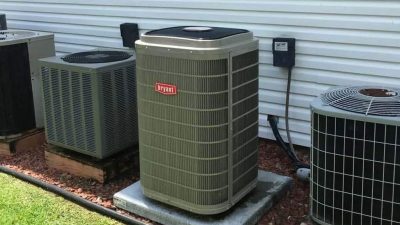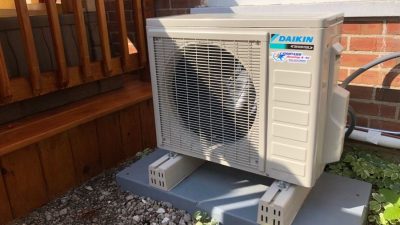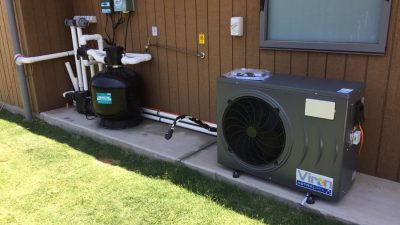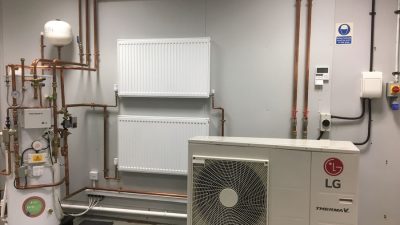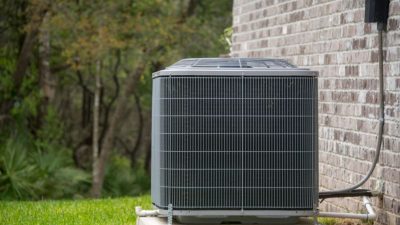Are you looking for an energy efficient way to heat and cool your home? If so, a ground source heat pump may be the perfect solution. Ground source heat pumps are becoming increasingly popular with homeowners who want to reduce their carbon footprint while still enjoying the comfort of temperature controlled air in their homes. In this article, we’ll explore what ground source heat pumps are, how they work, and why they might be right for you.
Ground source heat pumps (GSHPs) are a form of renewable energy that use natural sources from beneath the Earth’s surface to generate heating or cooling. They don’t rely on burning fossil fuels like traditional central heating systems do; instead, GSHPs use electricity to power a compressor and circulate a transfer fluid through pipes buried underground. This transfer fluid absorbs any available thermal energy from the surrounding soil before returning it back into the home as either hot or cold air depending on what is needed at the time.
The benefits of using GSHPs include reduced emissions due to not relying on fossil fuels and lower running costs compared to traditional systems. Furthermore, because these systems draw energy from under the earth rather than above it, they can provide consistent temperatures all year round regardless of external factors such as weather conditions. Ultimately, GSHPs offer a reliable and low maintenance alternative that can give homeowners greater freedom over their climate control needs without taking up too much space or being overly expensive to install and operate.
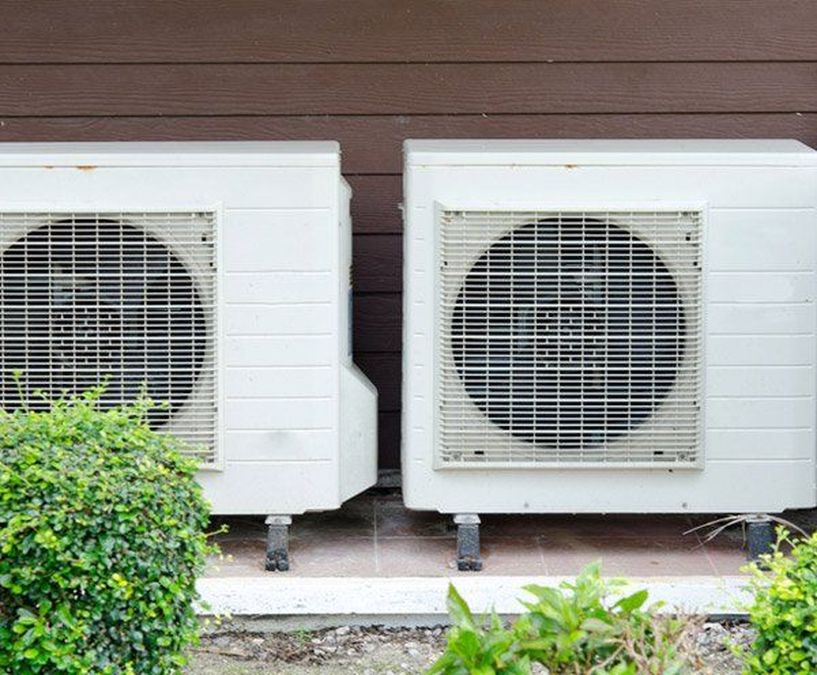
What Is Ground Source Heat Pump Technology?
Ground source heat pump technology is a highly efficient, cost-effective way to take advantage of the earth’s natural energy sources. It utilizes pipes buried in the ground to collect and distribute thermal energy for heating and cooling purposes. This renewable resource can be used as an alternative to traditional fuels such as propane or oil, providing significant savings on monthly utility bills.
The process begins by installing a loop of piping underground that circulates water mixed with antifreeze through it. The fluid absorbs heat from the ground, which is then transferred into your home using a compressor and fan system. During the summer months, this same system reverses itself so that warm air is drawn out of your home and returned outside. As you can see, this type of technology provides both year-round comfort and environmental benefits without breaking the bank.
Thanks to its many advantages, ground source heat pump technology has become increasingly popular among homeowners looking for ways to save money while reducing their carbon footprints. With today’s energy costs continuing to rise, more people are turning to this reliable source of renewable energy than ever before. So don’t wait any longer – make the switch today and start enjoying all the benefits that come with owning a ground source heat pump!
Benefits Of Using Ground Source Heat Pump
The benefits of installing a ground source heat pump are undeniable. For starters, it can provide great financial savings over the long-term. Not only will you save money on energy costs with geothermal heating, but you’ll also enjoy tax credits and other incentives that come with utilizing renewable energy sources. Additionally, its energy efficiency advantages result in reduced environmental impact since fewer fossil fuels are required to produce the same amount of energy.
Here’s a list outlining some of the key benefits offered by ground source heat pumps:
- Substantial cost savings through lower energy bills
- Tax incentives for using renewable energy sources
- Enhanced energy efficiency leading to reduced environmental impact
- Reduced maintenance requirements compared to traditional HVAC systems
Apart from reducing your monthly utility bill, investing in a ground source heat pump is an excellent way to reduce your carbon footprint without sacrificing comfort or convenience. Plus, these systems typically last up to 25 years – so you won’t have to worry about replacing them anytime soon! All things considered, there’s no doubt that investing in a ground source heat pump provides tremendous value both now and into the future.
How It Works
Ground source heat pumps are a type of renewable energy system that utilizes the natural thermal energy found in the ground. They use geothermal loop systems, which have an underground network of pipes filled with water or antifreeze to absorb and transfer heat between the earth and a building’s indoor space. Heat exchanger technology is used to extract this stored energy from the pipe loops and deliver it as usable heating or cooling for homes and businesses.
The two main types of ground source heat pump systems include direct exchange (DX) systems, where refrigerant fluid circulates directly through one set of buried piping; and closed-loop systems, where a separate fluid such as water or antifreeze flows through a continuous loop into the ground before being circulated back up again. This second option allows for greater flexibility when designing the perfect system for each location. Both methods provide efficient means of extracting thermal energy from beneath the surface while also reducing any environmental impacts associated with traditional air conditioning units or furnaces.
Heat extraction methods vary depending on whether you choose open-loop or closed-loop configurations. The former uses wells drilled into aquifers belowground to draw out warm water, whereas the latter relies on embedded vertical tubes containing circulating fluids that move within sealed U-shaped plastic pipes located several feet belowground level. In either scenario, these subterranean sources offer reliable access to steady temperatures all year round—providing consistent comfort and cost savings without using additional electricity or fossil fuels.
Cost Considerations
Now that we understand how ground source heat pumps work, let’s explore the associated cost considerations.
| Type of Cost | Range | Financial Incentives Available? |
|---|---|---|
| Installation Costs | £6,000 – £14,000 (depending on size) | Yes – e.g. Renewable Heat Incentive scheme in UK for domestic users and Enhanced Capital Allowance scheme for commercial users. |
| Heating Energy Costs** | Up to 50% lower than conventional heating systems* | No |
| Running Costs*** | Varies according to usage and efficiency of system installed; typically between 5p & 10p per kWh produced by heat pump* |
When considering a ground source heat pump installation, there are numerous costs to consider before making an informed decision. Firstly, it is important to factor in the initial installation costs which can range from £6,000 up to £14,000 depending on the size of the property or building being heated as well as other factors such as location and complexity of design. Fortunately though there may be financial incentives available that could help reduce these upfront costs through schemes like the Renewable Heat Incentive (RHI) in the UK for domestic users or the Enhanced Capital Allowance Scheme for commercial users. Another key consideration when looking at GSHP’s is their running costs; this depends on a number of variables including the type of GSHP installed, maintenance records and overall efficiency levels achieved but they usually fall within 5-10 pence per kilowatt hour generated by your heat pump. Lastly you should also take into account potential savings made with regards to reduced energy bills compared to traditional heating systems, due to GSHPs providing much more efficient solutions over time thus leading to more money saved in your pocket!
In summary then, if you’re considering installing a ground source heat pump it is essential that all associated costings are researched thoroughly so that you can make an informed decision without compromising either budget restrictions or desired results.
Maintenance Requirements
Ground source heat pumps require maintenance to continue working efficiently. To ensure your unit operates in the best condition, routine inspections and servicing should be carried out regularly.
Servicing includes checking the refrigerant levels, inspecting wiring and components for signs of wear and tear, lubricating moving parts if necessary, cleaning filter screens, and replacing any worn-out parts. This will help extend the life span of your unit as well as prevent it from breaking down unexpectedly or consuming too much energy. It’s also important to check all connections between indoor and outdoor units on a regular basis so there aren’t any leaks that could damage your system.
To keep your ground source heat pump functioning well, it’s essential to make sure you choose an experienced technician who can safely carry out repairs and provide advice about future upkeep. They’ll be able to detect small problems before they turn into more serious issues that could result in costly repairs or even replacement of the entire unit. With proper maintenance by a qualified professional, you can rest assured that your GSHP will run at peak efficiency with minimal disruption for years to come!
Alternate Solutions
Moving on from maintenance requirements, let’s discuss alternate solutions for heating homes. One popular option is ground source heat pumps (GSHP). GSHPs are a type of geothermal energy system that uses the natural warmth found beneath the Earth’s surface to provide efficient and cost-effective heating. They work by extracting this warm air and pumping it into your home through radiators or underfloor piping systems.
Here are some advantages of using GSHP:
- Easy installation – can be installed in just one day
- Quieter than other forms of heating such as solar heating, air-source heat pumps, biomass boilers and oil furnaces
- Can last up to 25 years with minimal maintenance required
- Cheaper running costs compared to traditional methods of heating
The efficiency of GSHPs means they use less energy which makes them more environmentally friendly than other types of central heating systems. Furthermore, you could potentially get money back from installing a GSHP due to government incentives available for renewable energy technologies. All these benefits make GSHP an attractive alternative solution for anyone looking to reduce their carbon footprint whilst still keeping their house comfortable during winter months.
Conclusion
Ground source heat pump technology is an efficient, cost-effective way to heat and cool your home. It’s a great option for those who want to save money on their energy bills while still enjoying the comfort of climate control year round. Plus, it’s easy to maintain and require minimal effort from you.
Overall, ground source heat pumps offer many benefits that make them worth considering if you’re looking for an alternative heating and cooling system. They can help reduce emissions and save money in the long run by providing consistent temperatures all year round. Of course, as with any major purchase decision, there are some potential drawbacks too – like maintenance requirements and initial installation costs – so be sure to do your research before deciding which solution is best for you.
In conclusion, ground source heat pumps provide significant savings over traditional air conditioning systems when used correctly. Although they may require more upfront investment than other options, they could end up saving you quite a bit of money in the long run due to lower electricity usage and fewer repairs or replacements needed down the line. All things considered, this makes them a great choice for anyone interested in reducing their carbon footprint without compromising on comfort at home!

